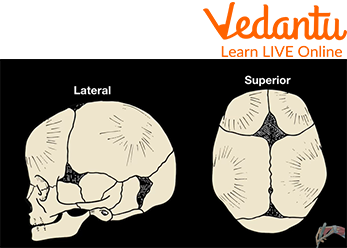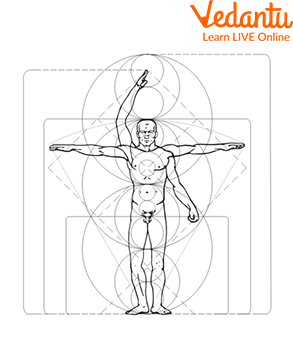




A Brief Understanding of Proportionate Body in Babies
Growth and development occur continuously from birth through old age. The baby's normal growth progression of changes in height, weight, and head circumference are acceptable with established norms for the population.
Children and babies are toy versions of adults. The differences in body size, muscle strength, and bone and ligament, occupant packaging for crash require specific consideration. Some people wonder why some babies have big heads and small bodies. In this article, we will find answers to all such questions.
This article is an overview of proportions, babies with big heads and small bodies, head, trunk and limbs proportions, proportionate body, and more.
Baby Proportions
An average baby grows around 25 cm taller in the first year. During childhood, growth is around 6 cm per year.
At birth, a baby's head is large, and makes up
By the age of two, it makes up less than
By the age of six, it is much more in proportion.
By the age of ten, is just over
The final adult height is only about
Head
The baby's head is proportionately larger than an adult's. The head's circumference is roughly 13 to 14 inches at birth. It rises by 17% in the first three months of life and by 25% by the time the baby is six months old. The circumference increases by almost half an inch every year from the third to the fifth year.

Human Skull
Trunk
At birth, the chest is circular, but as the baby grows the transverse diameter becomes larger than the anterior-posterior dimension, giving the chest an elliptical shape. At birth, the chest circumference is about half an inch smaller. At one year, the chest is slightly larger than the head circumference; after 1 year, the chest becomes larger in diameter.
The bulge of the newborn baby's abdomen is emphasised by the abdominal organs pushing forward during breathing against the weak muscle wall of the abdomen.
Abdominal girth is about that of the chest during the first 2 years of life. After 2 years, increases in abdominal circumference at the umbilical level keep pace with the increases in thoracic girth.
Generally, in the early part of infancy, there is little change in trunk form, but after erect posture, there is a relative reduction in the anterior-posterior diameter of both the thoracic and abdominal regions.
With the smaller chest and pelvis of the baby, less of the abdominal contents are protected by the bony pelvis and can be more easily injured.
Limbs
Generally, lower limbs increase more rapidly than the upper limbs.
At birth, the lower limb forms about 15% of the body volume and adults reach about 30%. The upper limb makes up about 8% of the at birth and keeps this proportion throughout life.
At about 2 years, their lengths are equal but for adults, the lower limb is about one-sixth longer than the upper limb.
Babies with Big Heads and Small Bodies
Babies have big heads in proportion to their bodies! Their big heads hold big brains because there is a lot to learn.
A baby's head is already almost adult-size, but its limbs are relatively short. The child grows and increases in height and weight, and the proportions of the baby's body change.
Before birth, the brain expands quickly; however, throughout the years spent, its growth slows down significantly. While the newborn is just approximately 5% of adult weight, the brain is 25% of adult size at birth.

Human-body Ratio
Human Body Ratios
Did human bodies come in all sizes and forms? Our bodies show surprising similarities. Draw a vertical line down the centre of a body, the left and right sides are almost mirror images of each other.
Human bodies also show interesting ratios. Ratios compare two quantities, the size of one part of the body to the size of another part, or the whole. An example of body ratio is a person's arm span—the distance from the middle fingertip of the left hand to that of the right hand when stretching out both arms horizontally—to their height. This ratio is one-to-one, meaning that a person’s arm span is about their height. There are human body ratios; some are independent of age and others change as we grow from a baby to an adult.
Wondering who would be in these ratios? Artists are avid users of human-body ratios because it helps them draw realistic-looking figures. They are also used in the medical world.
Summary
The infant and child are structurally different from adults in a variety of aspects that are crucial to the design of effective occupant restraint systems and protection against impact forces.
Head circumference increases significantly during the postnatal year due to the progressive and rapid growth of the brain. The head-small face pattern is noticeable in children even up to ages 7 and 8. The trunk and limbs grow almost at identical rates during puberty, but the trunk keeps getting longer after the limbs stop getting longer during the teenage stage. We have now got our answers to all the questions like why do some babies have a big head and small body? We hope you enjoyed reading this article.
FAQs on Learning About Baby Proportion Relating to Their Body Parts
1. What are the three common measurements done on babies?
Weight, length and head circumference help the baby's healthcare provider get thoughts about his or her overall health.
2. Why are babies' heads so large in proportion to their body sizes?
At birth, the head makes up about 25 per cent of our length (think about how much of your length would be head if the proportions were still the same!) A baby's head is already almost adult-sized to accommodate the developing brain which allows traditional growth.
3. What's the first colour a baby sees?
Young babies are indeed capable of seeing colours, but their brains may not perceive them as clearly or vividly as older children and adults do. The first primary colour your baby can see is red.









